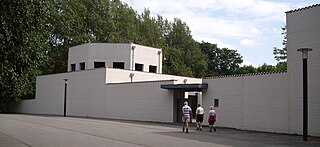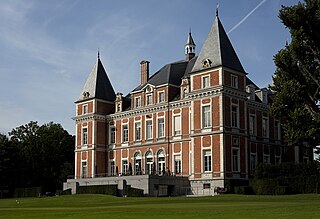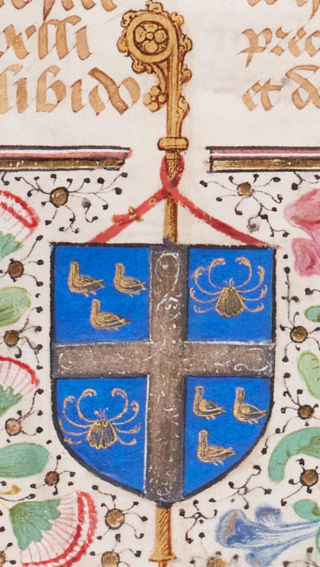
Koksijde is a town and a municipality in Belgium. It is located on the North Sea coast in the southwest of the Flemish province of West Flanders.

Heusden was a municipality located in the Belgian province of East Flanders. In 1977 it merged with the municipality of Destelbergen, of which it is now part.

SaintIdesbald (Idesbaldus) was a Cistercian monk and abbot of Ten Duinen Abbey.

Herkenrode Abbey was a Catholic monastery of Cistercian nuns located in Kuringen, part of the municipality of Hasselt, which lies in the province of Limburg, Belgium.

Nieuwenbosch Abbey, also Nieuwenbos Abbey was a Cistercian nunnery in Heusden, East Flanders, Belgium, later relocated to Ghent.

Ter Doest Abbey was a Cistercian abbey in Belgium, in the present Lissewege, a district of Bruges, West Flanders.

Male Castle, Bruges. A community of the Canonesses Regular of the Holy Sepulchre. It originated in Bruges in the 11th century, and between 1954 and 2013 was settled in Male Castle in Male, Sint-Kruis, Bruges, West Flanders, Belgium.

Roosenberg Abbey was established in 1238 at Waasmunster, halfway between Ghent and Antwerp. The abbey is still operating at Waasmunster, though not on its original site. Its 750-year history has not been uninterrupted.
The Abbey of Onze-Lieve-Vrouw ter Nieuwe Plant, formerly also Roesbrugge Abbey is a community of Augustinian canonesses belonging to the Congregation of Windesheim. The sisters are informally known as the Roesbrugge Dames - the Roesbrugge Ladies. Located in Roesbrugge from 1239 to the late 16th century, the community then moved into Ypres, West Flanders, Belgium, where it exists today. Its adjacent school is the Lyceum Onze Lieve Vrouw ter Nieuwe Plant.

Bethlehem Abbey in the village of Bonheiden, Belgium, is a house of Benedictine nuns of the Subiaco Cassinese Congregation. The monastery was built in 1965 as a Redemptorist house but was transferred to the Benedictines in 1975.
CornilCacheux was a French pipe organ maker.

Gerard de Baere, a native of Laarne, was the 43rd abbot of Ten Duinen Abbey in Bruges from 1653 to 1666.

Bernard Campmans, a native of Douai, was the 40th Abbot of Dunes from 1623 to 1642. He reclaimed the rights of the defunct Ter Doest Abbey for the mother house, and was responsible for the community's re-establishment in Bruges after decades of temporary accommodation at a monastic grange following the destruction of the medieval abbey buildings in Koksijde during the Dutch Revolt.

Oosteeklo Abbey was a Cistercian nunnery founded in Oosteeklo in 1217 and later moved to Ghent.

St. Stefanus is a Catholic parish church in Ghent, Belgium, part of an Augustinian monastery. It is dedicated to St. Stephen. The present building dates from 1841.

Petegem-aan-de-Schelde is a village and former municipality in the Wortegem-Petegem municipality in the Belgian province of East Flanders. The village officially changed its name from Petegem into Petegem-aan-de-Schelde in order to distinguish itself from Petegem-aan-de-Leie. In 1971, the municipality merged into Wortegem-Petegem.
The Bruges Public Library is a public library in Bruges, Belgium.

Tongerlo is a village and deelgemeente (sub-municipality) of the municipality of Westerlo in the province of Antwerp, Belgium. The village is located about 10 kilometres (6.2 mi) south-east of the city of Herentals. Tongerlo is best known for Tongerlo Abbey founded in 1128 which became one of the most important abbeys of Belgium.

Johannes Crabbe was abbot of Ten Duinen Abbey in present-day Belgium, an imperial counsellor and bibliophile.


















